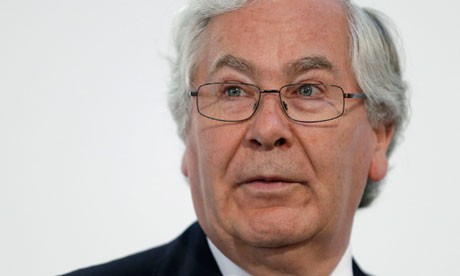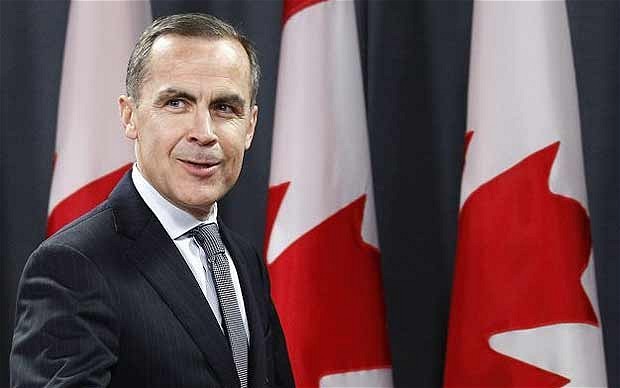Bank of England consideration of the main roles of the Bank of England in the UK
Post on: 26 Май, 2015 No Comment

The first objective of any central bank is to safeguard the value of the currency in terms of what it will purchase at home and in terms of other currencies. Monetary policy is directed to achieving this objective and to providing a framework for non-inflationary economic growth. As in most other developed countries, monetary policy operates in the UK mainly through influencing the price of money, in other words the interest rate.
The price stability objective is made explicit in the present monetary policy framework. It has two main elements: an annual inflation target set each year by the Government (currently 2.5%) and a commitment to an open and accountable policy-making regime.
Setting monetary policy — deciding on the level of short-term interest rates necessary to meet the Government’s inflation target — is the responsibility of the Bank. This has not always been the case. Under the 1946 Bank of England Act, the Treasury had the power to issue directions to the Bank. However, in May 1997, the Government gave the responsibility for setting interest rates, previously held by the Chancellor after consultation with the Governor, to a newly established Monetary Policy Committee of the Bank. This is subject to the proviso that the Government can “in extreme circumstances” give instructions to the Bank on interest rates for a limited footing when the new Bank of England Act came into force on 1 June 1998.
The Monetary Policy Committee (MPC) consists of the Governor, the two Deputy Governors and six other members. They meet every month and their decision on interest rates is announced immediately after the meeting. This is similar to arrangements that some other central banks operate. In keeping with the commitment to openness, the minutes are published within six weeks of the meetings. The Bank also publishes a quarterly Inflation Report, which provides a detailed analysis of inflation and gives an assessment of prospects for inflation relative to the target.
Box 1. Governance of the Bank
In preparing the Inflation Report and deciding on interest rates, the Bank and the MPC look at a range of domestic and international economic and monetary factors, which will have a bearing on inflation over the following two years, this being the time it takes for the full effects of interest rates to work through the economy. The Bank’s policy takes account of developments affecting industry and commerce throughout the UK. Information on such developments is supplied by the Bank’s agents in the regions. As it is important that the Bank’s policy takes account of financial market sentiment, the Bank must monitor the money, foreign exchange and gilt markets closely. Once policy is decided, the Bank implements it by means of its operations in the financial markets described latter within this article.
Setting Interest Rates
As banker to the Government and the banks, the Bank is able to forecast fairly accurately the pattern of money flows between the Government’s accounts on one hand and the commercial banks on the other, and acts on a daily basis to smooth out the imbalances which arise. When more money flows from the banks to the Government than vice versa, the banks’ holdings of liquid assets are run down and the money market finds itself short of funds. When more money flows the other way, the market can be in cash surplus. In practice the pattern of Government and Bank operations usually results in a shortage of cash in the market each day. The Bank supplies the cash which the banking system as a whole needs to achieve balance by the end of each settlement day. Because the Bank is the final provider of cash to the system it can choose the interest rate at which it will provide funds each day. The interest rates at which the Bank supplies funds are quickly passed throughout the financial system, influencing interest rates for the whole economy. When the Bank changes its dealing rate, the commercial banks promptly change their own base rates from which deposit and lending rates are calculated.
The Exchange Rate
Interest rates affect domestic monetary conditions and thus borrowing, consumer demand, investment, output and ultimately prices. They can also have an effect on the value of sterling in terms of foreign currencies. Other things being equal, higher interest rates will tend to attract foreign funds into sterling, and thus increase the sterling exchange rate against other currencies.
The Government is responsible for determining the exchange rate regime while the Bank provides advice on, and implements, the Government’s exchange rate policy. The Bank acts as the Government’s agent and can intervene in the foreign exchange markets by buying or selling the Government’s foreign exchange reserves. This process of intervention involves the Bank buying sterling in exchange for foreign currencies when it wants to curb a fall in sterling — or alternatively selling sterling if it wants to curb a rise. These operations cannot exactly determine the course of sterling in the markets. There are many other influences and commercial dealers can exert very substantial upward or downward pressure on a currency which official intervention on its own might have difficulty reversing. But it can be helpful in smoothing excessive short-term market pressures.
As part of the changes introduced by the passing of the 1998 Bank of England Act, the Bank can now manage its own pool of foreign exchange reserves, separately from those managed on behalf of the Treasury. These reserves are available for use in operations related to monetary policy subject to limits authorised by the Court of Directors.
Government Borrowing

Prior to 1 April 1998, one of the Bank of England’s functions was to manage the Government’s debt. It gave advice on, and subsequently arranged the financing of, the Government’s borrowing requirement, mainly by selling (or issuing) debt in the form of gilt-edged securities. On 1 April 1998, the responsibility for the management of the Government’s debt and the oversight of the gilt market passed to a new Debt Management Office (DMO) which is an executive agency of the Treasury. The DMO also provides policy advice to the Treasury on the annual gilt programme, makes decisions concerning the initiation of sales of gilts and liaises with market participants. The Bank retains the responsibility for the weekly cash management of the Government’s accounts (which is partly conducted through the use of Treasury bills) although the DMO will eventually take over this function.
The Bank’s Registrar’s Department maintains a register of holders of gilts. In addition the Bank operates a further facility, the Central Gilts Office (CGO), through which major participants in the gilt market both deliver gilts to one another and make automatic payment through their bankers by computer. This is an important feature of the gilt market where turnover is rapid and efficient settlement very important.
The Bank manages the Government’s foreign currency borrowing programme. This takes a variety of forms and depends on whether there is a wish to build up foreign exchange reserves. It includes bonds denominated in major international currencies and, in the past, medium-term bank loans and (in the 1960s and 1970s) borrowing from the International Monetary Fund. A significant proportion of the borrowing is denominated in the European Currency Unit (ECU), with monthly tenders of ECU Treasury bills, and quarterly tenders of ECU Treasury notes. From 1 January 1999, this borrowing will be denominated in euro (the currency of the Economic and Monetary Union).
Other Policy Instruments
Changes in short-term interest rates are the principal instruments of UK monetary policy. Other techniques have been used in the past. In the early 1980s, for example, the Bank sold more Government debt than was necessary to fund the government’s borrowing requirement, in order to reduce the growth of money supply. This policy of overfunding was abandoned in 1985. Other techniques, now abandoned, have included the imposition of quantitative ceilings on banks’ lending (abolished in 1971), requirements to place special deposits with the Bank of England according to how fast their deposits were growing (ended in 1980), and guidance on bank lending, aimed at discouraging loans to customers. In practice, only interest rates have been found to be effective, and as markets have become increasingly open, particularly since the abolition of exchange controls in 1979, other methods of monetary management have been increasingly unlikely to work.
Reproduced by kind permission of the Bank of England














